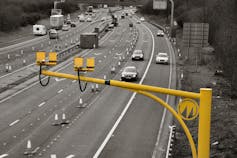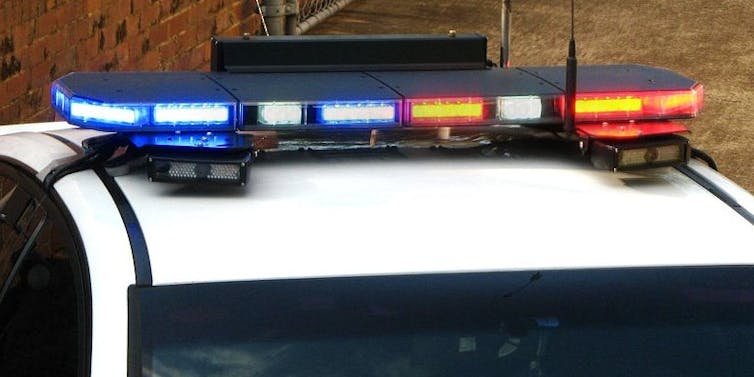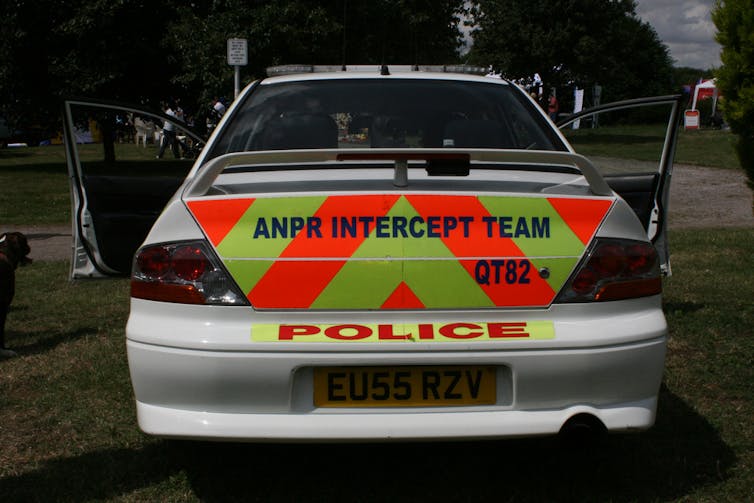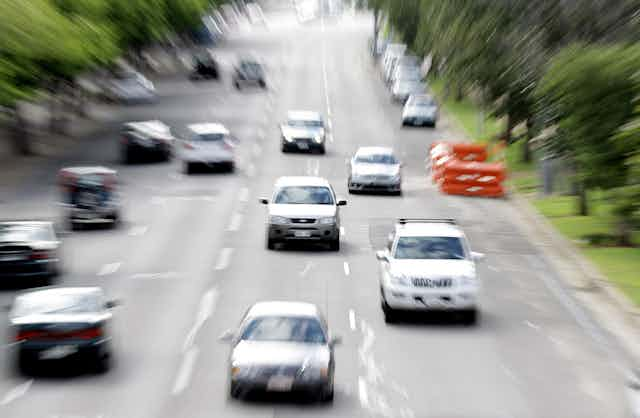Is there a quick fix for detecting unregistered cars, terrorists, people with outstanding warrants or people who are simply driving too fast or for too long?
The Coalition appears to think so: it has included automated number plate recognition (ANPR) technology in its policy to tackle crime, with a promise to protect major transport hubs:
[ANPR] will enable law enforcement and criminal intelligence agencies to identify people and organisations whose attendance at these locations may be unauthorised or suspicious.
So how does ANPR work - and is it really that effective?
The ANPR technology has been around for several decades and is being increasingly embraced by law enforcement agencies in Australia and overseas as installation and operational costs continue to fall.

The technology consists of the following basic elements:
High-definition infrared digital camera(s) to illuminate and capture an image or a partial image of the number plate. These typically use pulsed, narrow wavelength retro-reflective techniques. A colour image and/ or video of the vehicle would also normally be taken. Some camera systems can take images at speeds of up to 240km/h.
Fixed or onboard ruggedised processors capable of handling multiple cameras use optical character recognition (OCR) software to convert the grabbed image(s) to a searchable text string.
Computer server with software to process the request. This may for example be onboard a police vehicle or it may be a central server somewhere, or both.
Wi-Fi, 3G or some other form of high-speed data network to transmit the number of interest, or results from the onboard systems to a (typically central) computer for processing and receipt of information of interest.
A database (preferably national) of known number plates, stolen vehicles, registration details, alerts, status of registered owner and so on. This would potentially be updated with real time data collected by the vehicles or stationary mounted camera systems.
Onboard display in the police vehicle to present the results (or beep to indicate that the vehicle is one of interest).

Until recently, the time-frames required to process a plate have been somewhat problematic.
In the case of a mobile unit, it takes time to position the police vehicle, obtain the picture, convert it to text (not as easy as it may seem), use an onboard system or send it using a non-terrestrial network service (anyone using a mobile phone will know how flaky that connection can be in some areas).
Then you need to wait for the computer to search the database (hoping the database contains interstate licences if the car is from across the border) and display the results in a meaningful manner.
This is a challenge if you are in a high-speed pursuit!
Use and abuse (and misuse)
Increasing popularity reflects perceptions that this use of technology is benign and that it has multiple uses, such as detecting unregistered vehicles, semi-trailers whose drivers have breached multiple driving rules or speed limits, or facilitating processing of warrants.
The same ANPR technology is used in a range of applications varying from law enforcement, tollways, parking, congestion charging and average speed calculations (as seen on the Hume Highway and around the ACT).
In the US it is used to patrol schools and playgrounds to identify potential sexual predators, and set up temporarily at checkpoints to identify drivers with prior drink-driving convictions.
Optical character recognition has been one of the stumbling blocks for this technology. Many factors conspire to make it hard to obtain the plate including:
- varying fonts, colour, special characters, logos, weather, ambient lighting, condition of the number plate
- type of material used
- any avoidance techniques used by the owners (such as bending the plate, using reflective coverings and so on).

Nevertheless, the technology is improving all the time. But we need to look behind the rhetoric and consider how it is used.
Several years ago CrimTrac, Australia’s crime data clearinghouse, conducted a major investigation into the use of ANPR and found that the technology works. It sidestepped persistent questions about privacy, given that the technology tracks innocent and guilty alike.
The technology has also attracted criticism overseas, with the UK Information Commissioner for example condemning its use in the Royston “ring of steel” (identifying every vehicle’s movement through a particular town) and the American Civil Liberties Union warning people in the US that “You Are Being Tracked”.
Nevertheless, ANPR is not going to disappear. Indeed, it is quietly becoming a standard feature of Australian streets and highways.
And now you understand how the technology works, in thinking about the election - and so-called “regulatory creep” - we need to also consider how it might be misused.

